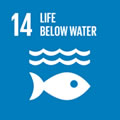Por favor, use este identificador para citar o enlazar a este item:
http://hdl.handle.net/10261/337882COMPARTIR / EXPORTAR:
 SHARE
BASE SHARE
BASE
|
|
| Visualizar otros formatos: MARC | Dublin Core | RDF | ORE | MODS | METS | DIDL | DATACITE | |

| Título: | Ten Years of Intense Physical-Chemical, Geological and Biological Monitoring Over the Tagoro Submarine Volcano Marine Ecosystem (Eruptive and Degassing Stages) |
Autor: | Fraile-Nuez, Eugenio ; Santana-Casiano, Juana Magdalena; González-Dávila, Melchor; González-Vega, Alba; Vázquez, Juan Tomás; Sotomayor García, Ana CSIC; Ferrera, Isabel CSIC ORCID; Santana-González, Carolina; Eugenio, Francisco; Marcello, Javier; Hernández León, Santiago; Bakalis, Evangelos; Rueda, José Luis; Gómez-Ballesteros, María; Álvarez-Valero, Antonio M.; Sánchez-Guillamón, Olga; Palomino, Desirée; Tello-Antón, María Olvido; Presas-Navarro, Carmen; Escánez, José; González-Porto, Marcos CSIC ORCID ; Fernández de Puelles, María Luz; Olivé Abelló, Anna CSIC ORCID ; Vinha, Beatriz; Machín, Francisco CSIC ORCID; Martín-Diaz, Juan Pablo; Arrieta López de Uralde, Jesús M. CSIC ORCID | Fecha de publicación: | jul-2023 | Editor: | Springer | Citación: | El Hierro Island 8: 161-184 (2023) Active Volcanoes of the World 11: 161-184 (2023) |
Resumen: | The shallow Tagoro submarine volcano monitoring represents a unique opportunity not only for improving our sparse understanding of submarine volcanic processes in specific scientific fields as physical and chemical oceanography or marine geology but also its interactions over the marine biology in one of the richest marine ecosystems in Europe. This chapter aims to summarize the most relevant physical–chemical, geological and biological changes that occurred in the marine ecosystem of El Hierro island, at the Marine Reserve Punta de La Restinga—El Mar de Las Calmas, due to the genesis of the new underwater volcano Tagoro (27º37′07″N–017º59′28″W) in October 2011. During the first six months of the eruption, extreme physical–chemical perturbations caused by this event, comprising thermal increase from up to + 18.8 °C, water acidification with a pH decrease of 2.9 units, deoxygenation to anoxic levels and extremely high metal enrichment among others, resulted in significant and dramatic alterations of the marine ecosystem. After March 2012, once the eruptive phase was finished, the new submarine volcano entered an active hydrothermal phase involving the release of heat with smaller but still significant and important thermal anomalies of up to + 2.55 °C around the craters, density decrease of − 1.43 kg m−3, pH decrease of − 1.25 units, and high concentrations of metals and inorganic nutrients similar to upwelling zones. These enrichments are still active up to date, producing clear signs of marine recovery not only in the benthonic strata but also in the whole water column compared with pre-eruptive data. Since its eruption ten years ago, an unprecedented monitoring effort has turned into the longest and most complete multidisciplinary time-series for the study of a shallow submarine volcano, with the realization of 31 oceanographic multidisciplinary expeditions that systematically measure more than 40 different physical–chemical and biological variables. All this information and the results obtained during the evolution of the process could serve as a baseline for better understanding future or similar submarine eruptions worldwide | Descripción: | 24 pages | Versión del editor: | https://doi.org/10.1007/978-3-031-35135-8_8 | URI: | http://hdl.handle.net/10261/337882 | DOI: | 10.1007/978-3-031-35135-8_8 | ISBN: | 978-3-031-35134-1 978-3-031-35135-8 |
ISSN: | 2195-3589 | E-ISSN: | 2195-7029 |
| Aparece en las colecciones: | (ICM) Libros y partes de libros (IEO) Libros y partes de libros |
Mostrar el registro completo
CORE Recommender
NOTA: Los ítems de Digital.CSIC están protegidos por copyright, con todos los derechos reservados, a menos que se indique lo contrario.


